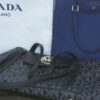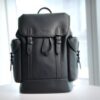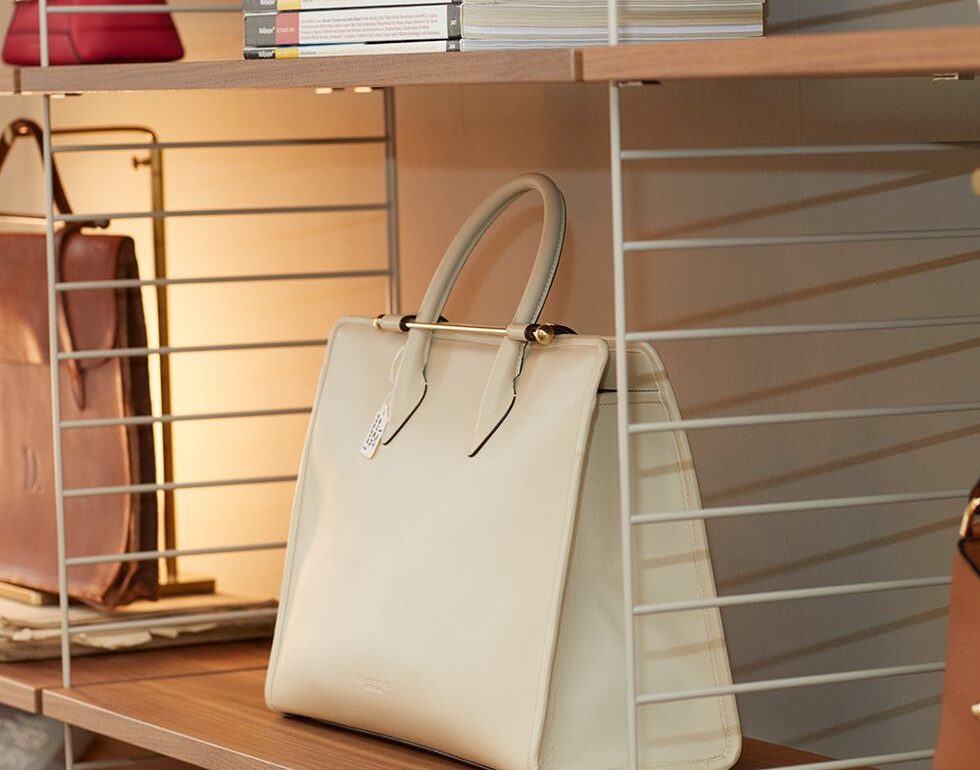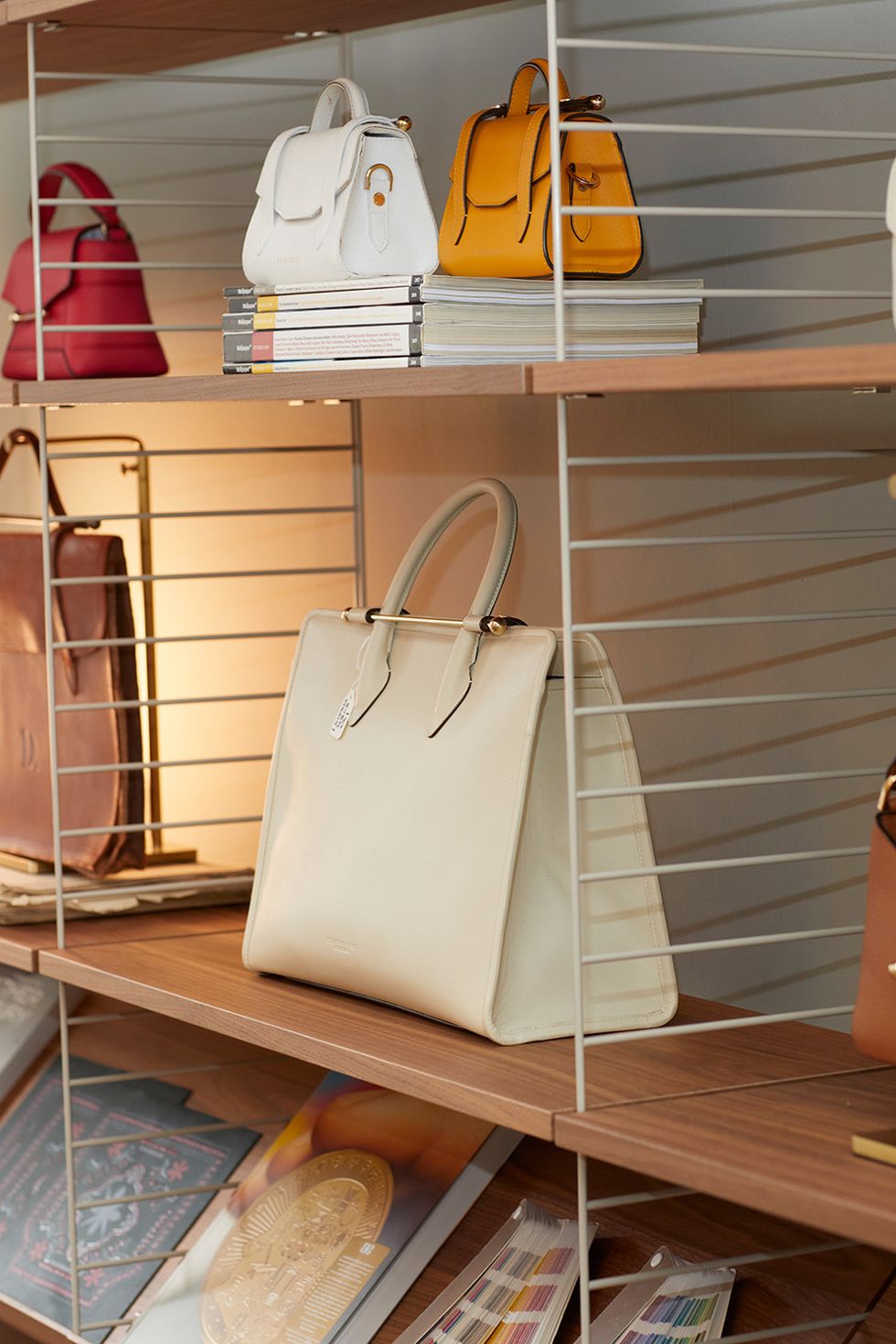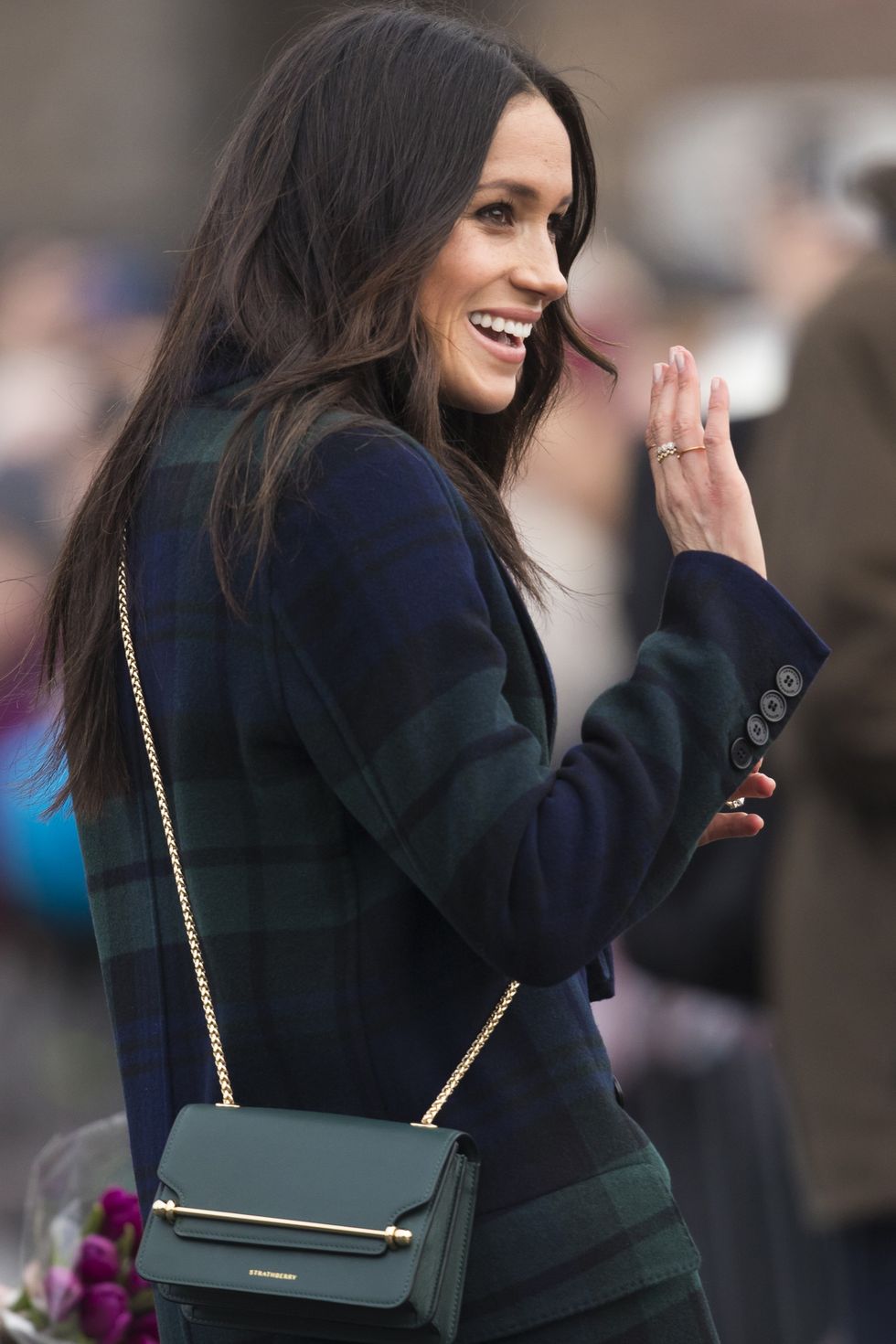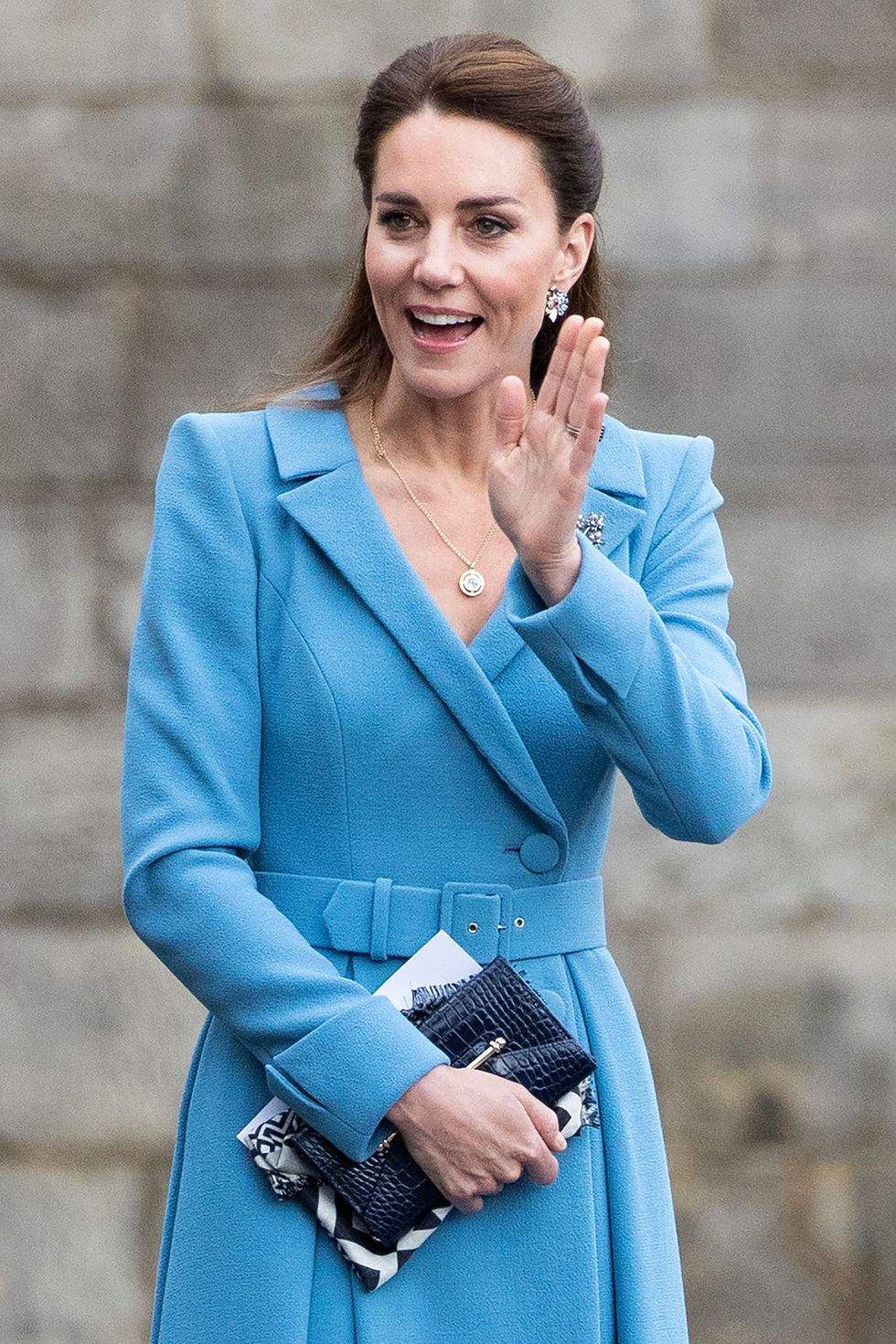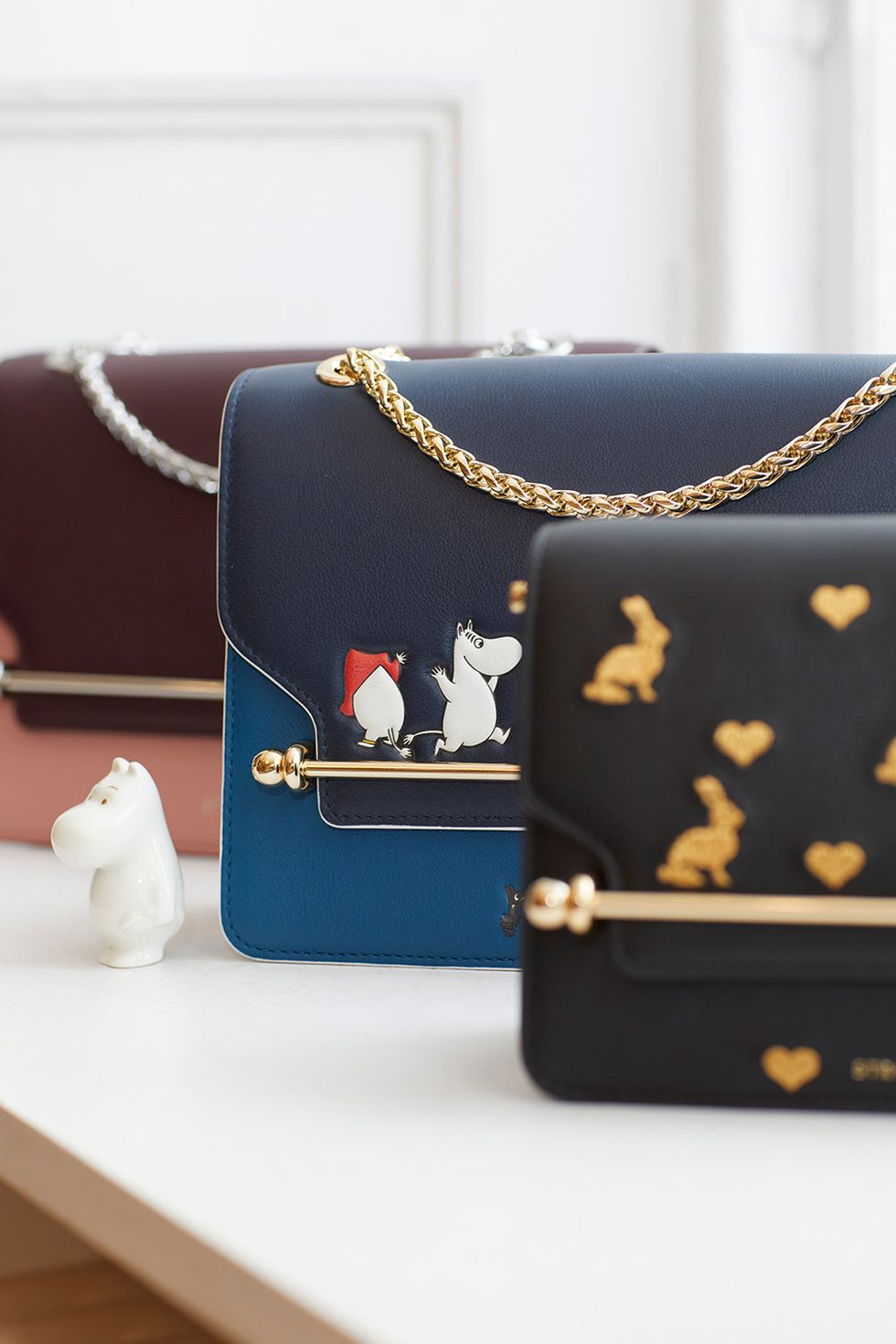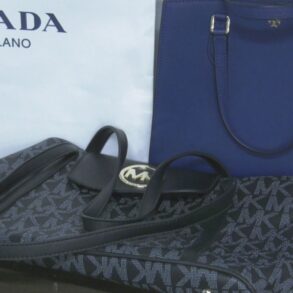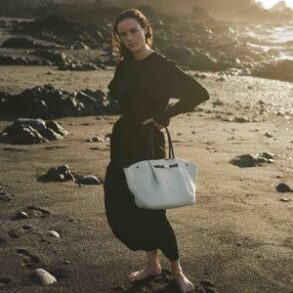On Wednesdays, the design team at Strathberry decides what they want to wear.
Each Wednesday morning, a small design group from the Scotland-based accessories brand, led by co-founders and spouses Guy and Leeanne Hundleby, gathers on the top floor of the brand’s Edinburgh headquarters, housed in an idyllic white town house that is protected as a UNESCO World Heritage site. Color swatches and inspiration photos line one wall; the other is covered by shelves of upcoming seasons’ samples. At a table in the center, the team handles pieces of materials, tries on bags for size, and pitches new concepts. The meeting doesn’t last longer than an hour, but it makes Wednesday “the best day of the week,” Leeanne tells me over tea in the brand’s official showroom three floors below.
The bag that started it all for the decade-old label had humbler origins. Strathberry’s first design was a top-handle, curved tote bag with a gold bar detail, inspired by a vintage leather music case the co-founders stumbled upon in a thrift shop. This initial design gave way to a miniature version in different shades of leather and a backpack: architectural pieces that conveyed “quiet luxury” before it was a buzzword. They were pretty but not pretentious, functional but not overly utilitarian, and they were handcrafted in Spanish workshops that also housed some of the biggest luxury conglomerates.
This was enough to get the sort of endorsement some designers wait decades to earn—just four years into business.
Strathberry had been steadily gathering fans in fashion and influencer circles when Meghan Markle carried the label’s two-tone mini tote on an official royal walkabout in 2017, shortly after announcing her engagement to Prince Harry. Then, she carried the brand’s East/West crossbody bag to another formal appearance.
Celebrities like Margot Robbie had carried Strathberry before, but Markle was different. “Things just took off to another level,” Guy says—“things” meaning sales and media attention. Markle wore the brand more than once, and each time it drove sales. Other royal placements soon followed: Kate Middleton, Princess of Wales, has also carried Strathberry (on at least three separate occasions), as have Princess Eugenie and Sophie, Duchess of Edinburgh.
“You’ve got to pinch yourself, because you have got these incredible individuals who’ve got their choice of any bag that they would like to choose, right?” Leeane says. “It’s like a little gift.”
Little is the operative word. Dozens of articles have been written about the Strathberry bags anointed as “royal favorites.” (This includes pieces I’ve written for Bazaar). And while the brand is grateful for its most famous fans, its founders also feel it has more to offer.
“I think there was a point where you’re a bit … you run the risk of potentially just being known for that thing. And I think we were quite aware of that, and we didn’t feel that was right for the brand,” Leeanne reflects. “[It was] fantastic that was happening. But we also wanted to make sure that, actually, all that we were doing was coming out and it wasn’t just about that one bag.”
If Strathberry could write its own definition in the eyes of the general designer-handbag-carrying public, it would not simply be a “royal-approved” brand. It would be, Guy tells me, “the standout luxury brand from Scotland.”
Right now, the Hundlebys say they’re primarily known more for their signature totes and the people who carry them than the label’s roots in Edinburgh or the breadth of its offerings. Of course, this hasn’t necessarily held Strathberry back. Guy projects the brand would generate $26 million in sales of its leather bags, cashmere, and jewelry this year, and $36 million in 2024. “The target is now to reach that $100 million in revenue within the next three to four years,” he says. Fans are also willing to spend for exclusive merchandise: An anniversary auction to benefit charities like Dress for Success and Smart Works raised over $15,000 from sales of limited-edition archival bags.
“Edinburgh is not known as a fashion capital, but it’s really nice because we can quietly go about what we do here and try to achieve originality and do interesting things,” Guy says. Ten years in business have given Strathberry’s team a “platform” to think bigger than the brand’s original designs. The guiding question: How can they bring the feeling of their Wednesday design meetings—warm and intimate, with an appreciation for the finer things—to life outside of the town house?
Part of the answer, the founders say, is improving Strathberry’s marketing—bringing to the fore the stories of the brand’s artisan partners in Ubrique, Spain, where its bags are made alongside pieces for Loewe and Carolina Herrera, and calling attention to the headquarters in Edinburgh. Another key is channeling the largely Scottish team’s shared heritage and warm friendliness into its designs in a clearer way. “We’re trying to engage with that [backstory] more, but not in a maybe overtly typically Scottish type way, with tartan and tweed and that kind of thing,” Leeanne says. To get there, Strathberry has hired designers whose résumés include training at more recognizably luxury brands, like J.W. Anderson, Marni, and Burberry.
Being seen as luxury brand on the level of an LVMH portfolio member takes slow and steady expansion. The U.S. is Strathberry’s biggest market, but they’re not planning to open a brick-and-mortar store here anytime soon. When new categories are added, it’s because they clearly continue a story told through the bags. Belts use the same leather as the best-selling purses; the jewelry range incorporates hardware to coordinate with the music bar decal. Cashmere speaks to the Scottish heritage of it all—it’s a material specialty of the region.
Leaping into entirely new territory, like coats built to withstand an Edinburgh winter or leather sneakers to coordinate with their handbags, isn’t a priority.
“You’re just trying to create something that hopefully people think looks beautiful, but it’s also practical for them to use day in day out.” Guy said of Strathberry’s overall intention. “We’re not trying to do too many things, but really just to achieve the best we can in that.”
The next ten years are about throwing open the doors to their townhouse, and hoping that new shoppers are enchanted enough to step inside—for the bags and the atmosphere they can see, not just the people who wore them first.

Fashion Commerce Editor
Halie LeSavage is the fashion commerce editor at Harper’s BAZAAR. Her style reporting covers everything from reviewing the best designer products to profiling emerging brands and designers. Previously, she was the founding retail writer at Morning Brew and a fashion associate at Glamour.
This post was originally published on this site be sure to check out more of their content.

